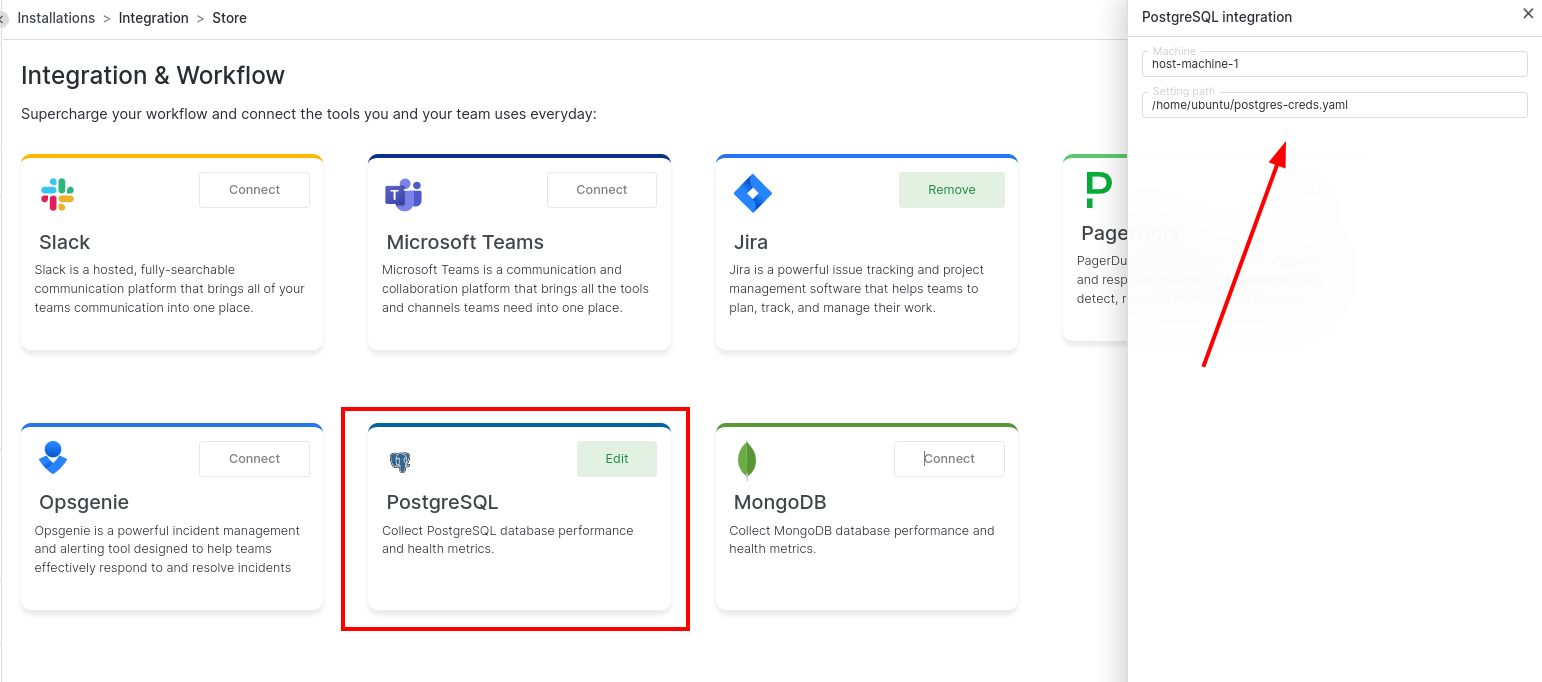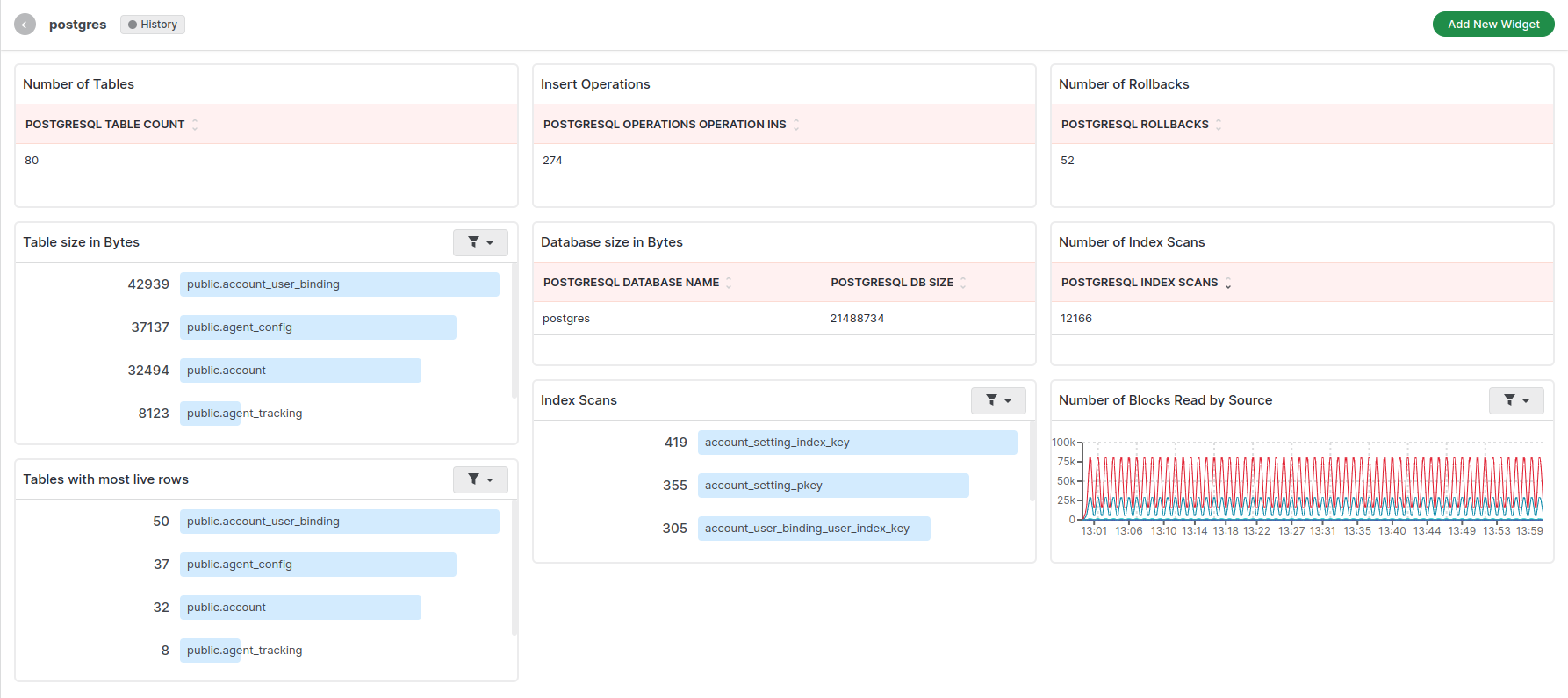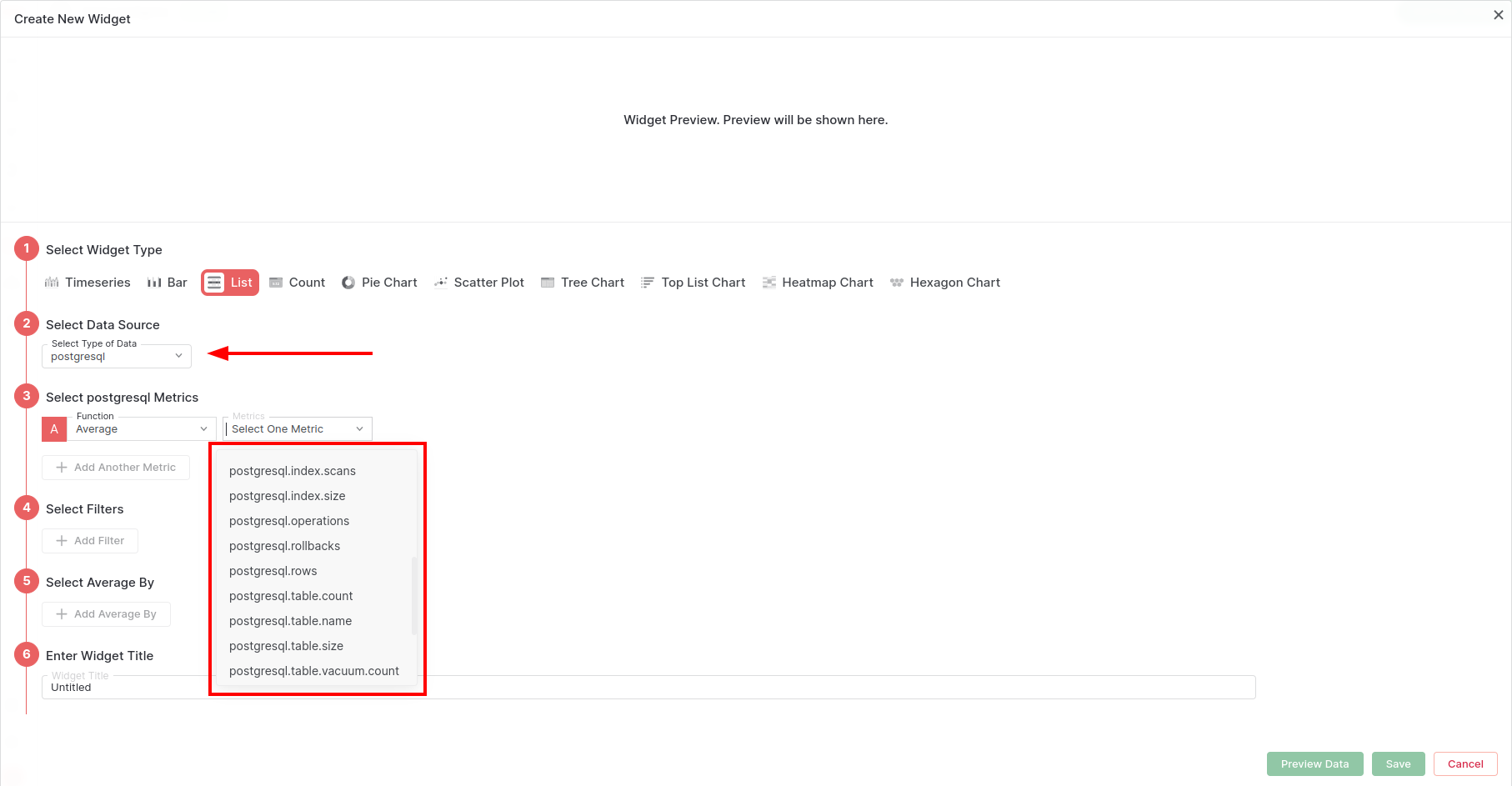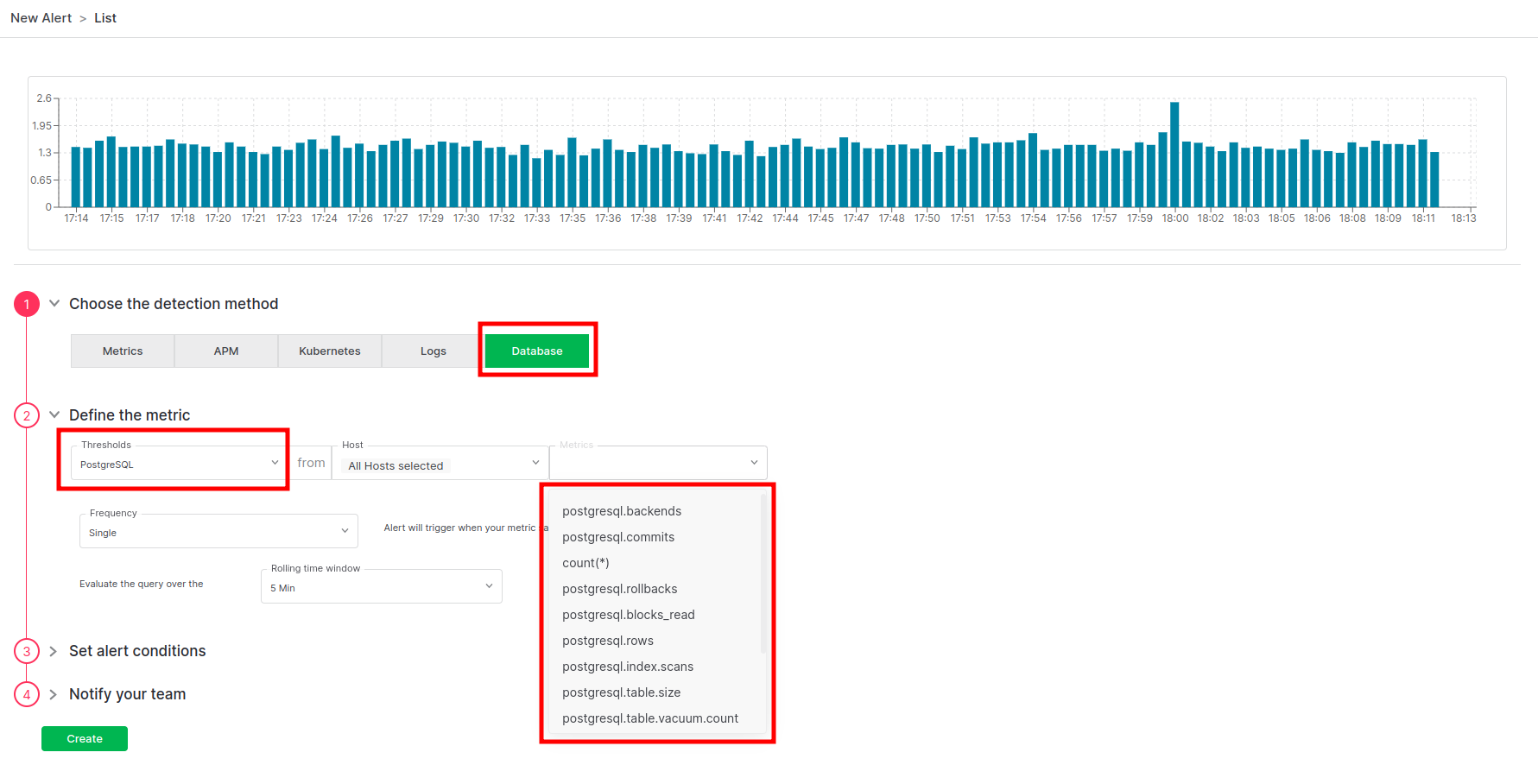Prerequisites
Middleware Host Agent (MW Agent) must be installed on your local machine. To install the MW Agent, see our Installation Guide.Setup
Step 1: Create Database Credentials
Create a.yaml file containing database credentials like the below example:
/home/ubuntu/postgres_creds.yaml
.yaml
Step 2: Access Integrations
Log in to Middleware, navigate to the Installations Page in the bottom left corner, select All Integration and click PostgreSQL
Step 3: Enable Integration
Add a host machine from the dropdown list, input the credential path from Step 1, and SaveVisualize Your Data
Default PostgreSQL Dashboard
Once the PostgreSQL integration setup is complete, a new PostgreSQL-specific dashboard will appear in the Dashboard Builder. This default dashboard serves as a jumping off point for visualizing and analyzing PostgreSQL data.
Create PostgreSQL Widget
PostgreSQL data can be added to dashboards as a custom widget. When adding a new widget, select thepostgresql data source to view a full list of available PostgreSQL data.

Alerts
Alerts can be configured for any PostgreSQL metrics. When creating a new rule select the Database detection method and PostgreSQL database type for available metrics to appear in the Metrics dropdown list. Select the desired metric and continue configuring the alert conditions.
Metrics Collected
| Metric | Description |
|---|---|
postgresql.backends | Number of backends |
postgresql.bgwriter.buffers.allocated | Number of buffers allocated |
postgresql.bgwriter.buffers.writes | Number of buffers written |
postgresql.bgwriter.checkpoint.count | Number of checkpoints performed |
postgresql.bgwriter.duration | Total time spent in checkpoint processing writing and syncing files to disk, in milliseconds |
postgresql.bgwriter.maxwritten | Number of times the background writer stopped a cleaning scan because it had written too many buffers |
postgresql.blocks_read | Number of disk blocks read |
postgresql.commits | Number of transactions that have been committed |
postgresql.connection.max | Configured maximum number of client connections allowed |
postgresql.database.count | Count of databases in a cluster |
postgresql.db_size | Database disk size |
postgresql.index.scans | Number of index scans on a table |
postgresql.index.size | Size of the index on disk |
postgresql.operations | Number of db row operations |
postgresql.rollbacks | Number of rollbacks |
postgresql.rows | Number of rows in the database |
postgresql.table.count | Number of user tables in a database |
postgresql.table.size | Disk space used by a table |
postgresql.table.vacuum.count | Number of times a table has been manually vacuumed |
Troubleshooting
Missing Integrations Menu
Missing Integrations Menu
Next Steps
- How to Create Alerts
- Dashboard Basics & Customization
- Custom Telemetry Ingestion
- Getting Started With Real User Monitoring (RUM)
- Data Ingestion APIs
Need assistance or want to learn more about Middleware? Contact us at support[at]middleware.io.
